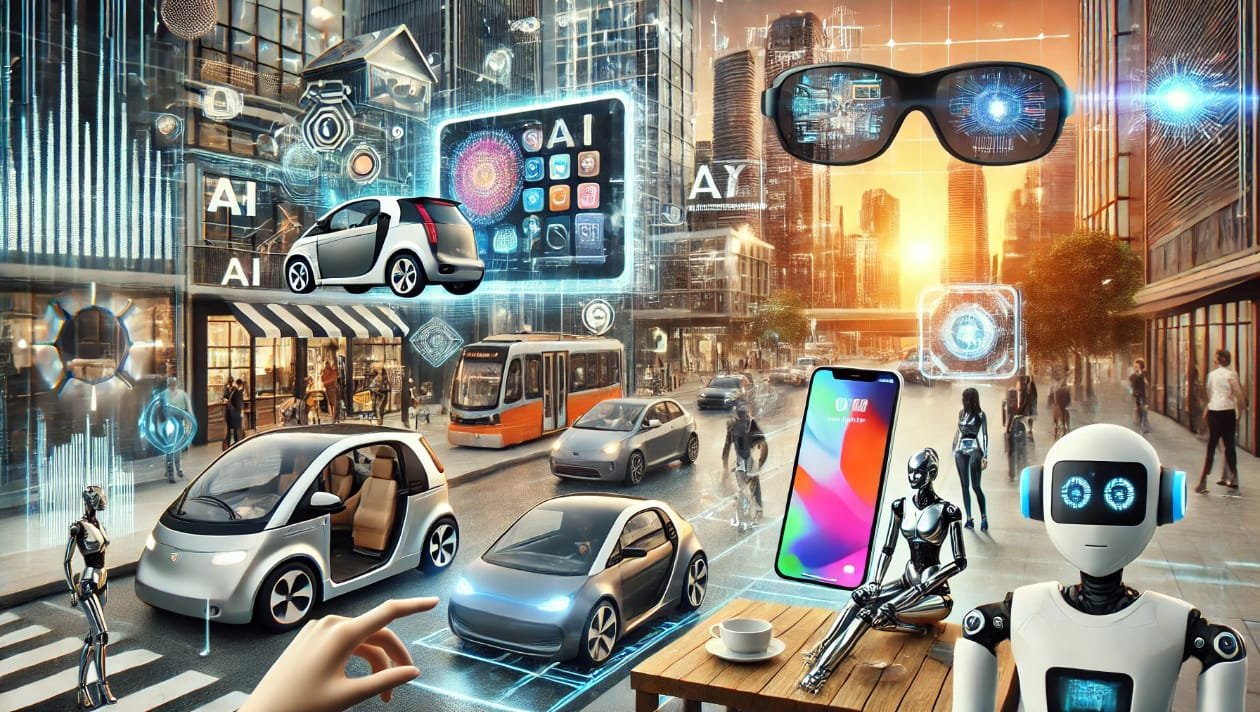Skip to content
1. Artificial Intelligence (AI):
- AI-powered devices become ever more sophisticated, thus automating tasks, improving decision-making, and enhancing user experience.
- From virtual assistants to self-driving cars, AI is revolutionizing industries and making our lives easier.
2. Internet of Things (IoT):
- IoT devices connect everyday objects to the internet, enabling remote monitoring, control, and data collection.
- Smart homes, wearable fitness trackers, and connected appliances are just a few examples of IoT transforming our homes and daily routines.
3. Virtual and Augmented Reality (VR/AR):
- VR and AR headsets immerse users in digital environments, creating new possibilities for entertainment, education, and training.
- From virtual concerts to interactive learning experiences, VR/AR blurs the lines between the physical and digital worlds.
4. Switching to 5G:
- 5G technology offers blazing internet speeds with lower latency for real-time applications and seamless connectivity.
- It also ignites advances for cloud gaming, autonomous vehicles, and remote surgery.
5. Cloud Computing:
- Cloud computing allows access to computing resources, storage, and software over the internet.
- That means cloud computing enables businesses and people to scale down, cut costs, and use advanced technologies without incurring much capital for hardware.
6. Wearable Technology:
- Smartwatches, fitness trackers, and other wearable technology are used to monitor health and activity and provide real-time notifications.
- They empower us to stay connected, manage our well-being, and make informed decisions about our health.
7. Smart Home Devices:
- Smart speakers, smart lights, and other connected devices allow home task automation, improved security, and comfort.
- They enable voice control, remote monitoring, and energy efficiency, making our homes more comfortable and secure.
8. Blockchain Technology:
- It is the secure and transparent digital ledger at the base of cryptocurrencies and other applications.
- It transforms industries as finance, supply chain management, and healthcare by providing a secure and efficient mechanism for record keeping.
9. Electric Vehicles (EVs):
- EVs are gaining popularity due to their environmental prospects, low operating costs, and modern technology features.
- The availability of charging infrastructure and various government incentives has promoted the adoption of EVs.
10. Telemedicine:
- Remote communications through video conferencing and other technologies are used by telemedicine platforms for connecting patients with healthcare providers.
- It produces an increase in improved access to healthcare, especially in rural or underserved communities, while enhancing patient convenience.
